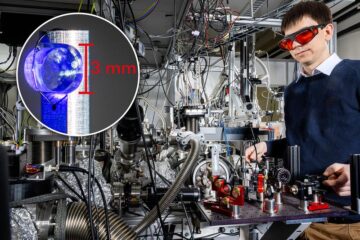High-tech labels with temperature memory for continuous monitoring of cold chains

A new monitoring solution has now been developed by one of BAM’s research teams: plastic labels with a temperature memory.
“One has to imagine that the labels undergo a change in shape when heated to a temperature pre-selected by ourselves,” explains Thorsten Pretsch, who heads the BAM project. “Two-dimensional codes contained in the labels change shape to such an extent that they become machine-readable and indicate that a temperature threshold has been exceeded.”
Meanwhile, the scientists were able to show that labels equipped with Quick Response (QR) codes can be made machine-readable at 0 °C, 10 °C and 20 °C. If they are used to label temperature-critical goods, monitoring can be done by reading tests using a commercial smartphone. The temperature memory polymer tested in the experiments is a thermoplastic polyurethane and comes from Bayer MaterialScience AG.
Originally, the labels were developed for tamperproof labelling of goods. “The temperature memory opens up completely new possibilities that previously could not be implemented due to the high production effort,” explains Pretsch.
The project is funded by the “Validation of the innovation potential of scientific research – VIP” initiative of the Federal Ministry of Education and Research (BMBF grant number 03V0043).
More information:
http://pubs.acs.org/doi/abs/10.1021/ma501171p
Contact:
Dr. rer. nat. Thorsten Pretsch
Department 6 Materials Protection and Surface Technologies
Email: Thorsten.Pretsch@bam.de
Media Contact
More Information:
http://www.bam.deAll latest news from the category: Materials Sciences
Materials management deals with the research, development, manufacturing and processing of raw and industrial materials. Key aspects here are biological and medical issues, which play an increasingly important role in this field.
innovations-report offers in-depth articles related to the development and application of materials and the structure and properties of new materials.
Newest articles

She deciphers how tomato roots communicate
Ora Hazak has always been fascinated by plants and is studying the signals that roots send to the rest of the organism. She aims to understand this communication in order…

Laser excitation of a nucleus
A long-awaited breakthrough opens the door to a new type of atomic clock and the investigation of fundamental questions in physics. After decades of investigation, researchers made an extraordinary quantum…

Recovering phosphorus from sewage sludge ash
Chemical and heat treatment of sewage sludge can recover phosphorus in a process that could help address the problem of diminishing supplies of phosphorus ores. Valuable supplies of phosphorus could…





















